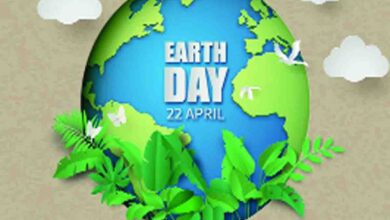The Gaia theory as a troubleshooter of the Earth

GUEST COLUMN
Monday 29 August 2022 | Vir Singh
 Vir Singh
Vir Singh
There is a hidden truth of our contemporary world which should now come to the fore. In this truth lie the solutions to all the problems of the world, in this lie the solutions to all the socio-economic and world peace issues. The truth is: politics divides and disintegrates, ecology unites and integrates. We will not speak anything on politics here, our theme and core sentiment is to unite and integrate, not divide and disintegrate; so we will throw light on ecology only and will be enlightened by that.
Any serious discussion on ecology is incomplete without appreciating the splendid work of the well-known ecologist, scientist and philosopher James Lovelock (26 July 1919 – 26 July 2022). On the occasion of his birthday on July 26, at the age of 103, James Lovelock left for his heavenly abode leaving behind his knowledge as a legacy for this world. The term ecology originated in the year 1866. This new dimension of learning about life was discovered by the German zoologist Ernst Haeckel. But for almost a century the ecology stayed far away from being in the limelight. Only a small chapter on this subject was taught in botany. But in the last two-three decades of the twentieth century, ecology established its dominance and came to be considered as the troubleshooter for all socio-economic crises. When Brundtland’s report “Our Common Future” was published in 1987, ecology became the focus of development visions, policies, perspectives and plans in the world, and the pivot of sustainable development.
The death of James Lovelock, one of the most respected scholars in the field of ecology, has left an ecological void. Our world knows Lovelock as an independent scientist, philosopher and the father of the Gaia hypothesis. His ideas on topics ranging from cryonics to chlorofluorocarbons, and climate to nuclear energy created new controversies in the scientific world, but his Gaia theory not only influenced the world, but it was also assimilated by the scientific world, especially by ecologists and environmentalists.
Gaia is considered a goddess based on the beliefs of the ancient Greek civilization. Based on this assumption, Lovelock developed the “Gaia Theory” related to the earth in the 1960s. At that time he was working for NASA’s Moon and Mars programmes. In his theory Lovelock saw the earth as a living and self-regulating organism with its natural cycles. When one cycle is out of balance, the other balances work to let it go on. When Lovelock’s Gaia hypothesis emerged and began coming into limelight, many prominent scientists opened their doors to criticism. But truth has its own light, and it goes on illuminating people slowly and steadily. Now the Gaia hypothesis has illuminated the mind, heart and soul of all nature lovers. Lovelock’s Gaia helps to explain in depth the chemical and physical balance between air, water and earth. These physico-chemical balances make life possible. These balances underpin climate science. The idea is not that the Earth is conscious of these processes; it’s just that all the chakras work together to be able to support the planet. Lovelock’s theory reinforces the idea that the Earth itself is a living planet, everything interconnected. He understood that human activities that destroy rainforests and eroded biodiversity hinder Gaia’s ability to reduce greenhouse gases emitting into the atmosphere. His explorations provided evidence of the effects of chlorofluorocarbons on the ozone layer, and he warned that burning fossil fuels was changing the climate before these issues were on most people’s radar. His research on electron capture devices in the late 1960s detected rising chlorofluorocarbon levels in the atmosphere as well as deadly pollutants such as polychlorinated biphenyls (PCBs) in air, water and soil that were causing ozone depletion. It was eventually rolled out in 1987 as the “Montreal Protocol” to control the manufacture of ozone-depleting chemicals.
Lovelock even thought a pandemic like Covid-19 might be related to the planet’s self-regulation: “I can easily give you a model and demonstrate that as the human population continues to grow, a virus will find possibility of developing which will result in declined population.”
To address the climate crisis, he advocated technologies that have not always been popular, including nuclear power and Edward Taylor’s suggestion of a sunshade in a sun-centered orbit that would reflect higher proportion of sunlight out of Earth. Lovelock continued to work, write and speak until his last days. “My main reason for not resting in a contented retirement is that like most of you I am deeply concerned about the potential for widespread damaging climate change and the need to do something about it now,” he said.
In July 2019, at the age of 100, he came up with yet another astonishing new theory about the future of life on Earth in his much-loved book “Novacene: The Coming of Hyperintelligence”. The theory argues that the Anthropocene – the era in which humans acquired planet-scale techniques – is ending after three centuries. A new era – the Novacene – has already begun and in due course of time new creatures will emerge from existing artificial intelligence systems. They will think 10,000 times faster than us and treat us as we treat plants now. These ultra-intelligent creatures will be as dependent on the health of the planet as we are. They would need Gaia’s planetary cooling system to shield them from the rising heat of the sun. Gaia is dependent on organic life. We will be partners in this project. Lovelock argues that it is important that Earth’s intelligence survives and prospers. We are currently the only beings capable of understanding the universe, but he speculates that the Novacene may be the beginning of a process that will see and find out whatever outstanding hitherto hidden throughout the universe. He may have left Gaia, but the knowledge he left is permanent and is essential to understanding our planet, our plight and our future, and solving the woes of planet Earth.
(The author is emeritus professor, GB Pant University of Agriculture and Technology. Views expressed are personal)






